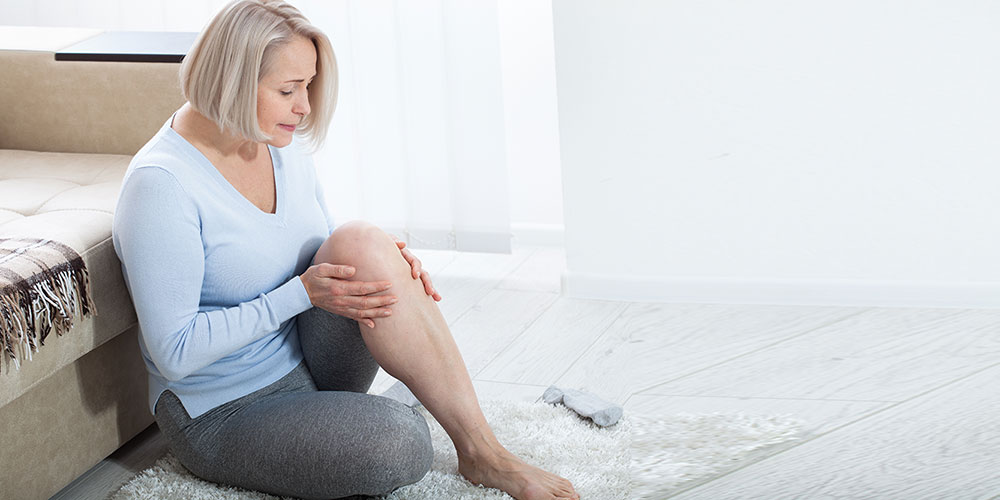Make an Appointment
Sick of dealing with constant joint pain? Well, with regular exercise, you may be able to relieve your joint pain once and for all.
Keep reading to learn how exercise can help joint pain and some of the best exercises you can do to relieve your joint pain naturally. Does exercise help joint pain?
Something which takes a great toll on the body, but no one can avoid is age. With age, everyone arrives at a stage where their joints and muscles are just not as fit as they used to be at a younger age, obviously.
However, although this may seem counterintuitive, the best way to deal with this unavoidable problem is to remain active.
Carrying out the necessary exercises that will help in maintaining the perfect level of fitness according to the requirements of your body without surpassing the level of intensity that your body can endure will be your best bet.
This way, you can strengthen and protect your joints without causing damage to your body without you even realising it.
Important Note: The main objective of exercise for your joints should be to remain fit. Exercise is also important for avoiding diseases that come with old age or a careless dietary regime.
Speaking of diet is also one of the most obvious things that affect how your body works as it ages. To cover that aspect, it’s essential to include calcium in your diet as it makes your bones stronger, adding to your body’s overall strength, especially when considering joint pain.
Aging shouldn’t dampen your motivation to carry out your favourite sports due to fear of injury or reduction in strength. However, it’s quite important to focus on muscular strength though, as that plays a vital role in improving your body’s coordination skills and ensures a more balanced body as well.
Both things are very important for the transition you make from a young, active individual to an aging human being.
What is osteoporosis?
Osteoporosis is a health condition where the bones in your body become weak and surprisingly, it’s a very common condition especially in men and women aged 60 or above.
Since osteoporosis causes the deterioration of your bones, it would make sense that it very much affects your joints since they’re constantly moving and in use. In short, osteoporosis can cause joint pain all over the body.
In this case, it is even more important for you to maintain a regular exercise schedule as it’s something that will help in dealing with this condition in a better way.

Other Causes of Joint Pain
While ageing is certainly one of the leading causes of joint pain, some other causes include:
- Rheumatoid arthritis: A chronic autoimmune disease-causing swelling and pain in the joints.
- Gout: A painful condition where crystals from the body collect within the joints which causes extreme pain and swelling.
- Bursitis: Joint pain caused by overuse, usually found in the hip, knee, elbow, or shoulder.
- Viral infections, rash, or fevers: Joint pain is a common symptom of these causes.
- Injuries: Broken bones or sprains
- Tendinitis: Inflammation of the tendons, typically found in the elbow, heel, or shoulder and is usually caused by overuse.
Benefits of Exercise for Joint Pain
Exercising daily has some immensely positive effects on your body and is great to minimise the effects of joint pain. Not only does it keep your body healthy overall, but it also has some focused effects which are an added benefit of exercising.
Some of those advantages include:
- Bone tissue conservation: as your body enters that stage of life where it goes through changes brought on by aging, this is where exercise steps in to take your body effectively through that change and then maintain the necessary features for a healthier transition
- Better mobility: exercise makes your body more flexible which vitally helps with a better movement of your muscles.
- Improved mood: you will notice that if you do not work out for a while and are just lazing around doing nothing that has a major impact on your mood. It makes you sulk more, and you just feel depressed for no apparent reason. Exercising releases endorphins that uplift your mood and make you more positive in life.
Best Types of Exercise for Joint Pain
Since we know that exercise can strengthen your bones and muscles to take pressure off your joints and relieve pain, here are some of the best exercises for joint pain.
Walking
Walking is one of the best exercises for joint pain because it’s low impact yet incredibly effective. By walking for at least 30 minutes every day, you’ll:
- Lubricate your joints
- Improve your cardio fitness
- Tone your muscles
- Improve your mood
Swimming
Swimming is another amazing exercise to do if you experience joint pain. Since the water makes your body buoyant, you’ll feel hardly any pressure on your joints while swimming with all the physical benefits of an effective cardio exercise.
- Less gravity pressure on joints
- Improve your cardio fitness
- Tone your muscles
- Improve your mood
Strength Training
To some extent, strength training is also important if you deal with joint pain. You won’t want to do strength training above your appropriate level, but some strength training is beneficial in that:
- You’ll strengthen muscles and bones which support your joints
- You’ll lubricate your joints during exercise
- You’ll improve your mood
- You’ll tone your muscles and potentially lose weight to take the pressure off your joints
Cycling
Cycling is another great exercise option for those with joint pain. Especially if you experience knee or hip pain from walking, cycling may be a good alternative for you with benefits including:
- Improving your cardio fitness
- Lubricating your joints
- Improving your mood
Yoga
Yoga is an incredible physical practice for anyone with joint pain. Using gentle yet powerful poses and movements that help keep your body in alignment, yoga also offers a variety of modifications that can be adjusted to your unique body.
Some benefits of yoga for joint pain include:
- Lubricating your joints
- Improving your mood
- Toning your muscles in a gentle way
- Countless modifications available
Pilates
Pilates is another gentle exercise style that was originally used for rehabilitation. Helping to keep your body properly aligned, Pilates is amazing if you’re dealing with joint pain because:
- You’ll gently tone your muscles
- You’ll improve your overall alignment
- You’ll improve your mood
- You’ll lubricate your joints

Best Types of Exercise for Joint Pain
Since we know that exercise can strengthen your bones and muscles to take pressure off your joints and relieve pain, here are some of the best exercises for joint pain.
Walking
Walking is one of the best exercises for joint pain because it’s low impact yet incredibly effective. By walking for at least 30 minutes every day, you’ll:
- Lubricate your joints
- Improve your cardio fitness
- Tone your muscles
- Improve your mood
Swimming
Swimming is another amazing exercise to do if you experience joint pain. Since the water makes your body buoyant, you’ll feel hardly any pressure on your joints while swimming with all the physical benefits of an effective cardio exercise.
- Less gravity pressure on joints
- Improve your cardio fitness
- Tone your muscles
- Improve your mood
Strength Training
To some extent, strength training is also important if you deal with joint pain. You won’t want to do strength training above your appropriate level, but some strength training is beneficial in that:
- You’ll strengthen muscles and bones which support your joints
- You’ll lubricate your joints during exercise
- You’ll improve your mood
- You’ll tone your muscles and potentially lose weight to take the pressure off your joints
Cycling
Cycling is another great exercise option for those with joint pain. Especially if you experience knee or hip pain from walking, cycling may be a good alternative for you with benefits including:
- Improving your cardio fitness
- Lubricating your joints
- Improving your mood
Yoga
Yoga is an incredible physical practice for anyone with joint pain. Using gentle yet powerful poses and movements that help keep your body in alignment, yoga also offers a variety of modifications that can be adjusted to your unique body.
Some benefits of yoga for joint pain include:
- Lubricating your joints
- Improving your mood
- Toning your muscles in a gentle way
- Countless modifications available
Pilates
Pilates is another gentle exercise style that was originally used for rehabilitation. Helping to keep your body properly aligned, Pilates is amazing if you’re dealing with joint pain because:
- You’ll gently tone your muscles
- You’ll improve your overall alignment
- You’ll improve your mood
- You’ll lubricate your joints

Physiotherapy
Finally, physiotherapy is incredible if you have joint pain. By combining exercise and rehabilitation treatment, your physio can work with you to improve your joint pain during every session.
Interested in learning more about physiotherapy for joint pain? Book an appointment with Physio Inq today!
Find more about our In home & mobile physiotherapy services operating right throughout Australia HERE.
Alternatively, locate one of our manly local clinics in operation across Australia HERE.
Date Published: Thursday, March 31, 2022
Locate a Mobile Physiotherapy
Service Near me
Get the experience & convinence you deserve to support your or a loved one's allied health needs.
Our Mobile Physiotherapy team are currently serving & taking appointments in the following states and regions in Australia:
Need to get into direct contact with ur Client Services team? We're all ears. Call our team directly on 1300 731 733
















